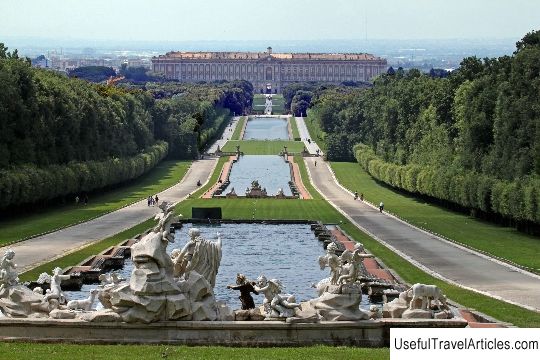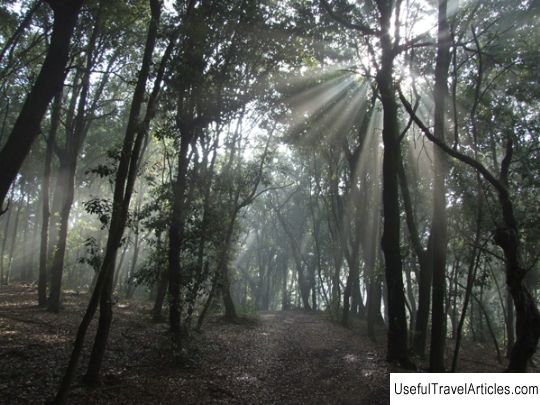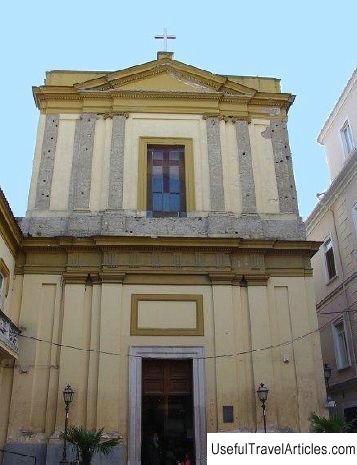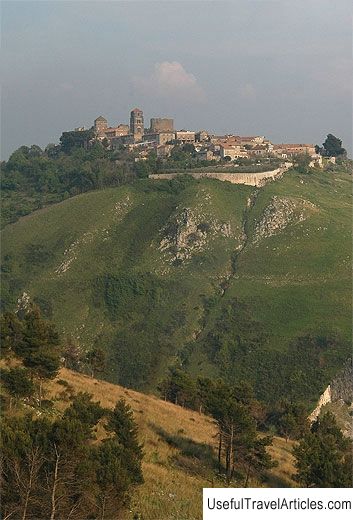San Leucio description and photos - Italy: Caserta
Rating: 8,2/10 (789 votes) 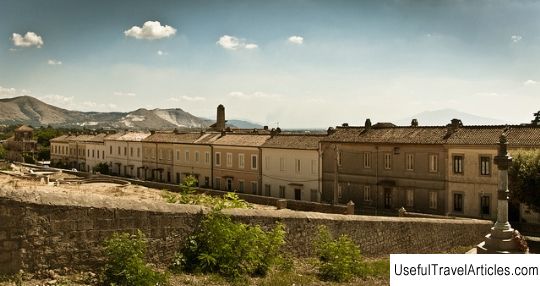
San Leucio description and photos - Italy: Caserta. Detailed information about the attraction. Description, photographs and a map showing the nearest significant objects. The title in English is San Leucio. Photo and descriptionSan Leucho is an area of Caserta located 3.5 km northwest of the city center. It lies at an altitude of 145 meters above sea level and was formed around an old silk factory - a UNESCO World Cultural Heritage site. The district got its name after the church of St. Letius, which once stood here. In 1750, King Charles VII of Naples, on the advice of his minister Bernardo Tanucci, chose this place for an unusual social and technological experiment - the introduction of a production model based on technical innovation and the needs of workers. Before that, there was a hunting residence of the Aquaviva family, now restored and known as the Palazzo del Belvedere. Belvedere is translated from Italian as "beautiful view" - from here, in good weather, an amazing view of Naples, the bay and the islands of Capri and Ischia opens up. At first, San Leucho was a holiday destination with royal hunting grounds and an aqueduct used to bring water to the Reggia di Caserta palace. The son of Charles VII, Ferdinad I, built his own hunting residence here - he was an experienced hunter and did not like the glitz and luxury of palace everyday life. And here Karl and Ferdinand founded a silk-spinning factory. Later, industrial buildings and residential buildings were built around it, which was unusual for Europe in the late 18th century. The architect of the project was Francesco Collecini, who installed noisy looms next to the royal apartments and turned the living room into a chapel for workers. For them, dwelling houses were built, and soon the whole area turned into an industrial town, which in 1789 was a kind of royal colony for the production of silk. The members of this colony used in their work the most advanced technologies known in Europe, and enjoyed certain privileges. For example, they had social security contributions, a pension, and the right to free secondary education. The king even wanted to turn the colony into a real city called Ferdinandopoli, but this project was never realized due to the invasion of French troops. Despite this, San Leucho continued to develop during the reign of Napoleon. King Ferdinand's legacy is still alive today: local silk and textile industries provide their products to elite foreign clients like Buckingham Palace, The White House, Palazzo Quirinale and Palazzo Chigi. The main square of San Leucho - Piazza della Seta - overlooks the very Palazzo del Belvedere, to which the factory buildings are adjacent. A staircase leads to the palace, which ends at the church of San Ferdinando Re, erected in the 18th century. Part of the Palazzo del Belvedere today is given over to an exhibition dedicated to the life and life of the royal family. In other premises, the Silk Museum is open with ancient looms and other tools. Since 1999, the Leuchana Festival has been held here to promote San Leucho and its luxurious park.         We also recommend reading Church of St. Marka (Crkva svetog Marka) description and photos - Croatia: Zagreb Topic: San Leucio description and photos - Italy: Caserta. |
